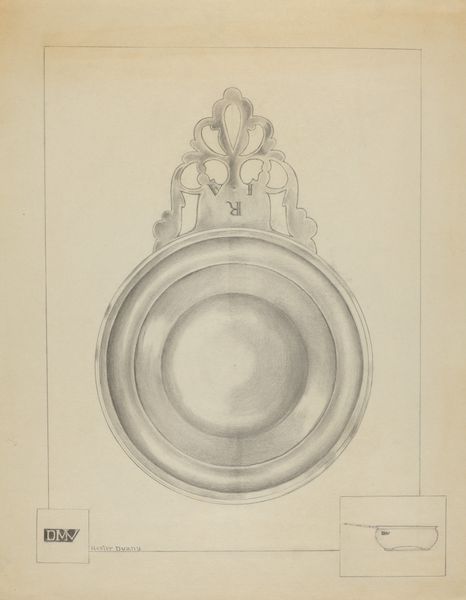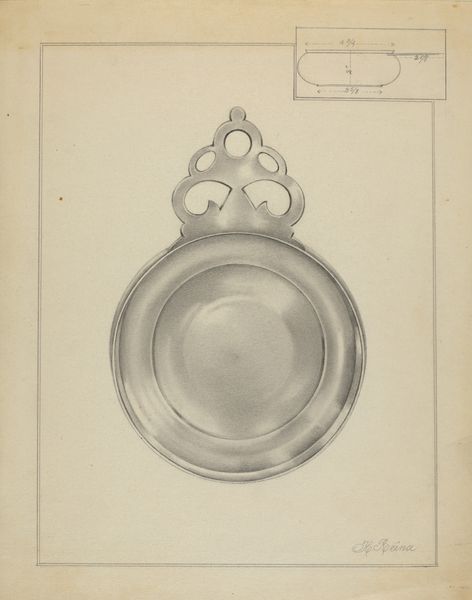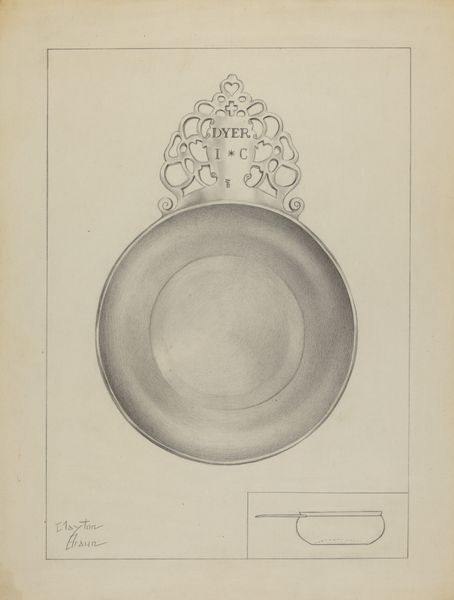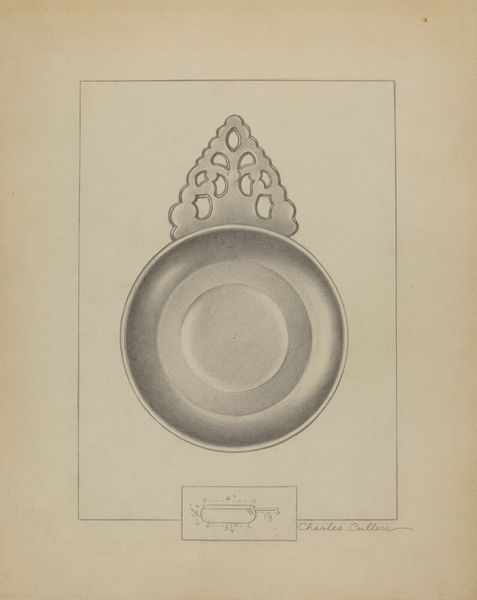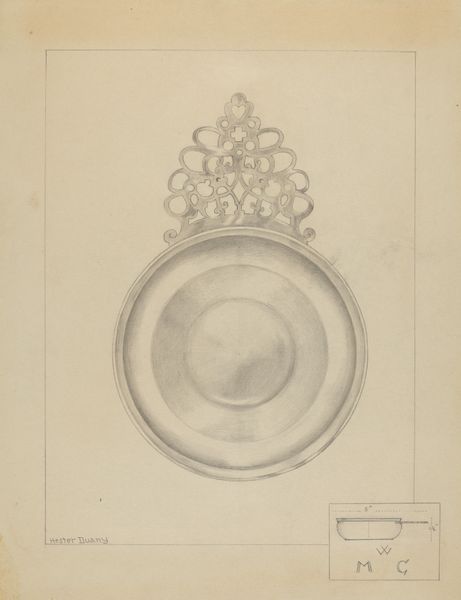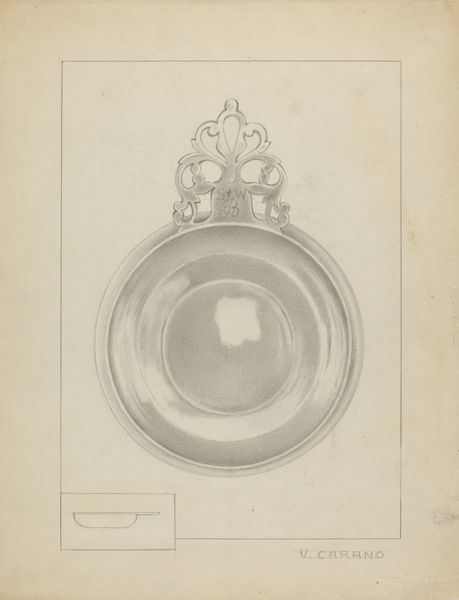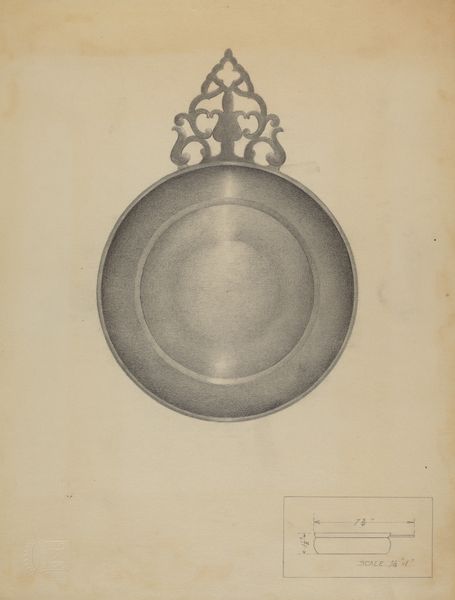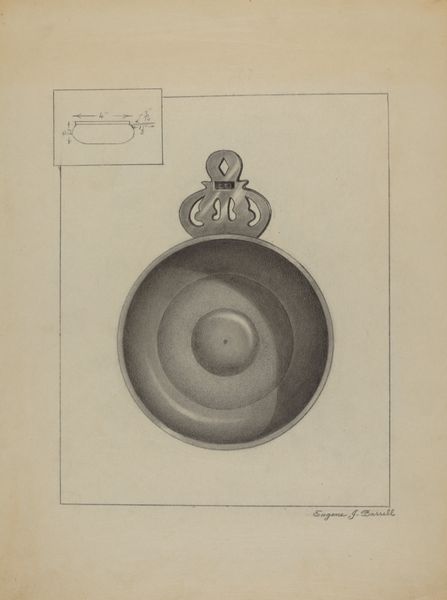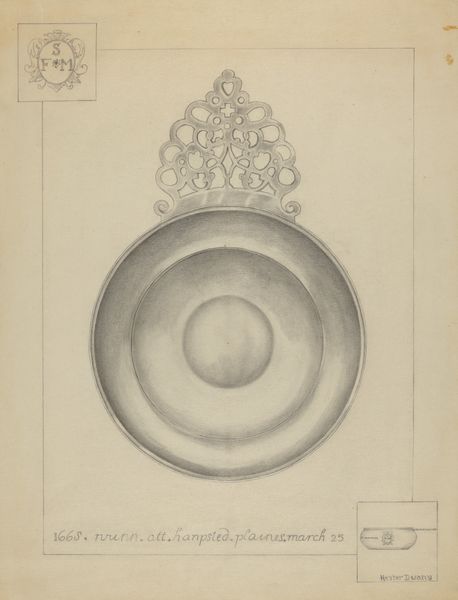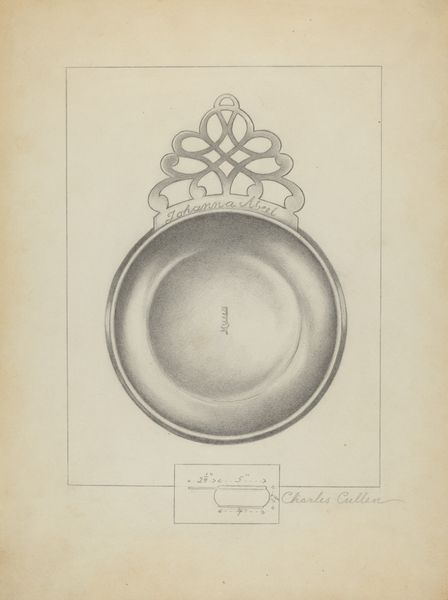
drawing, metal
#
drawing
#
metal
Dimensions: overall: 28.9 x 23 cm (11 3/8 x 9 1/16 in.) Original IAD Object: 1 7/8" high; 5 3/8" in diameter
Copyright: National Gallery of Art: CC0 1.0
Editor: Here we have Clayton Braun’s drawing of a "Silver Porringer," dating back to around 1936. It seems to capture the simplicity and functionality of everyday metalware from that period. The drawing style itself is so precise, almost architectural. What do you see in this piece, particularly in terms of its symbolism? Curator: I am immediately struck by how Braun elevates a humble object. A porringer – a simple bowl for the family table. Yet it's presented with such reverence and meticulous detail, focusing on material more than anything else. Look at the almost ghostly quality of the reflection within. Porringers carry echoes of shared meals and communal nurturing. Note also the engraving. Do you suppose those initials signify a maker or perhaps a family? Editor: I hadn’t thought about the reflection suggesting a sort of ghostly quality! I was more focused on its function. That makes me consider its emotional resonance as a familial object. Is the lack of overt decoration a symbolic choice, perhaps focusing attention on basic sustenance during a challenging time? Curator: It could indeed signify a deliberate restraint. Or, we could view the careful representation itself as a kind of ornamentation. Consider how Braun uses light and shadow to amplify the feeling of domesticity, suggesting values inherent to both family and sustenance. By inviting the viewer to observe every detail of this common place piece, is it elevated into more? Editor: It’s amazing how a simple object can evoke such rich layers of meaning when viewed through the lens of cultural symbolism. It also forces us to recognize what values the maker elevated and found essential for living a better life. Curator: Indeed. And in rendering it with such care, Braun prompts us to contemplate what objects *we* imbue with symbolic weight today, and why. We've been trained to accept this is only metalware, a sketch, a piece of paper, and a memory of an object from some distance, when we ought to acknowledge that the very mundane offers itself to mean something important.
Comments
No comments
Be the first to comment and join the conversation on the ultimate creative platform.
